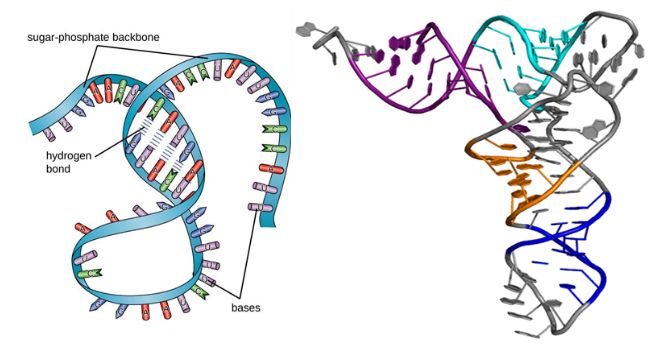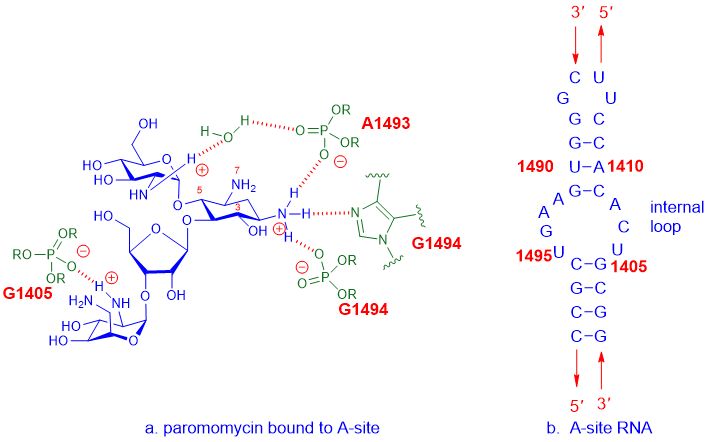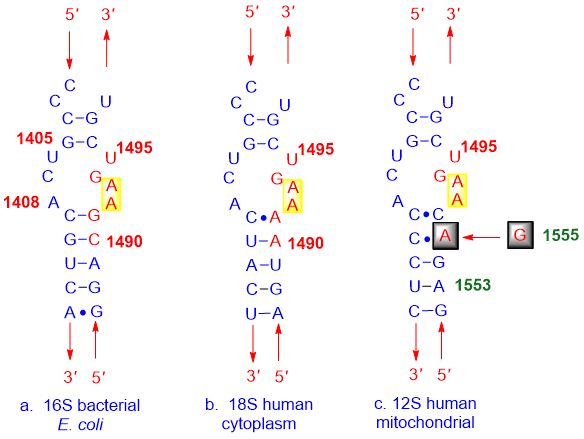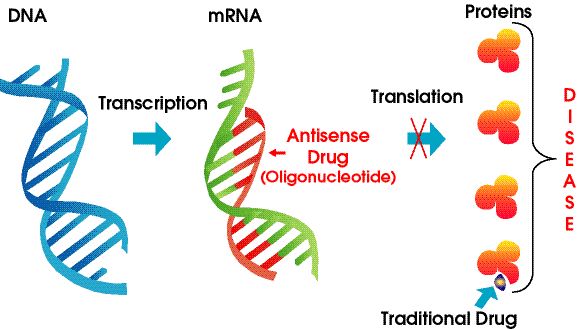Pfizer’s mRNA vaccine for COVID has reignited the passion for using ribonucleic acid (RNA) as a therapeutic target. However, targeting RNA with small molecules is extremely challenging.
RNA only has four building blocks: adenine (A), cytosine (C), guanine (G), and uracil (U) which replaces thymine (T) found in DNA. This makes drug selectivity an almost insurmountable obstacle. In contrast, there are 22 natural amino acids that makeup proteins, which explains why most protein-targeting drugs have relatively good selectivity.
Structure and function of RNA
Like proteins, RNA molecules have secondary and tertiary structures, as shown in the figure below. Although they are single-chain macromolecules, their secondary structure takes shape when base pairing causes bulges, loops, and helices. Then, three-dimensional folding leads to the tertiary structure of RNA, which is essential for its stability and function.
Figure 1. Structure of RNA
There are three types of RNA:
- Messenger RNA (mRNA) transcribes genetic information from DNA and is transferred as a base sequence onto the ribosome; l
- Ribosomal RNA (rRNA) is part of the protein-synthesizing organelles called ribosomes, which are exported to the cytoplasm and help translate information in mRNA into proteins;
- Transfer RNA (tRNA) is the link between mRNA and the amino acid chain that makes up the protein.
Targeting RNA as a therapeutic target is very attractive. It has been found that only 1.5% of our genome is ultimately translated into protein, while 70%-90% is transcribed into RNA. RNA molecules are the most important for all living organisms. According to Francis Crick’s “central dogma”, the most critical role of RNA is to translate genetic information from DNA into proteins. Besides, RNA molecules also have other functions, including:
- Acting as adapter molecules in protein synthesis; l
- Serving as a messenger between DNA and the ribosome; l
- They are carriers of genetic information in all living cells; l
- Promoting ribosomal selection of the correct amino acids, which is necessary for synthesizing new proteins in vivo.
Antibiotics
Despite being discovered as early as the 1940s, the mechanism of action of many antibiotics was not elucidated until the late 1980s. It’s found that a large proportion of antibiotics act by binding to bacterial ribosomes to prevent them from making appropriate proteins, thereby killing the bacteria.
For example, aminoglycoside antibiotics bind to the A-site of 16S rRNA, which is part of the 30S ribosome subunit, and then interfere with protein synthesis to interfere with bacterial growth, ultimately leading to cell death. The A-site refers to the aminoacyl site, also known as the tRNA acceptor site. The detailed interaction between aminoglycoside drugs, such as paromomycin, and the A-site of E. coli RNA is shown below.
Figure 2. The interaction between paromomycin and the A-site of E. coli RNA
Unfortunately, many A-site inhibitors, including aminoglycoside drugs, have safety issues such as nephrotoxicity, dose-dependent, and specific irreversible ototoxicity. These toxicities are the result of a lack of selectivity in aminoglycoside drugs for recognizing RNA small molecules.
As shown in the figure below: (a) the structure of the bacteria, (b) the human cell membrane, and (c) the human mitochondrial A-site are very similar, making A-site inhibitors bind to all of them.
Figure 3. The non-selective A-site inhibitor binding
Tetracycline antibiotics also inhibit the A-site of rRNA. They selectively inhibit bacterial protein synthesis by reversibly binding to a helical region (H34) on the 30S subunit complexed with Mg2+.
On the other hand, macrolide antibiotics bind near the exit site (E-site) of the bacterial ribosome tunnel for nascent peptides (NPET) and partially block it, thereby inhibiting bacterial protein synthesis. Finally, oxazolidinone antibiotics such as linezolid (Zyvox) bind to a deep cleft in the bacterial 50S ribosomal subunit, which is surrounded by 23S rRNA nucleotides.
Antisense oligonucleotides (ASO)
The antisense drugs are chemical-modified nucleic acid polymers that target RNA. They rely on Watson-Crick base pairing to bind to target mRNA, resulting in gene silencing, steric blockade, or splicing alteration. ASOs can interact with pre-RNAs in the cell nucleus and mature mRNAs in the cytoplasm. They can target exons, introns, and untranslated regions (UTRs). To date, more than a dozen ASO drugs have been approved by the FDA.
Figure 4. Antisense Technology
Small molecule drugs targeting RNA
In 2015, Novartis reported that they had discovered an SMN2 splicing regulator called Branaplam, which enhances the association of U1-pre-mRNA and rescues SMA mice.
On the other hand, PTC/Roche’s Risdiplam (Evrysdi) was approved by the FDA in 2020 for the treatment of SMA. Like Branaplam, Risdiplam also works by regulating the splicing of relevant SMN2 genes to produce functional SMN proteins.
RNA degraders
RBM stands for RNA-binding motif protein. Essentially, indole sulfonamide is a molecular adhesive. It selectively recruits RBM39 to the CRL4-DCAF15 E3 ubiquitin ligase, promoting RBM39 polyubiquitination and protein degradation. Genetic depletion or sulfonamide-mediated degradation of RBM39 induces significant genome-wide splicing abnormalities, ultimately leading to cell death.
RNA-PROTACs are developed to degrade RNA-binding proteins (RBPs). PROTAC uses a linker to connect the E3 ligase ligand to the RNA ligand, which binds to RNA and RBPs. Since RBP contains structural domains that can bind to specific oligonucleotide sequences, RNA-PROTAC uses an oligonucleotide sequence as a ligand for the protein of interest (POI). The final result is the degradation of RBPs.
Recently, Professor Matthew Disney of the Scripps Institution of Oceanography invented the RNA ribonuclease-targeting chimeras (RiboTACs). RiboTAC is a heterofunctional molecule that connects an RNase L ligand and an RNA ligand with a linker. It can specifically recruit endogenous RNase L to specific RNA targets, and then successfully eliminate RNA using the cellular nucleic acid breakdown mechanism (RNase L).
As researchers learn more about the interaction between small molecules and RNA targets, more drugs using this method will emerge in the future.
Post time: Aug-02-2023












